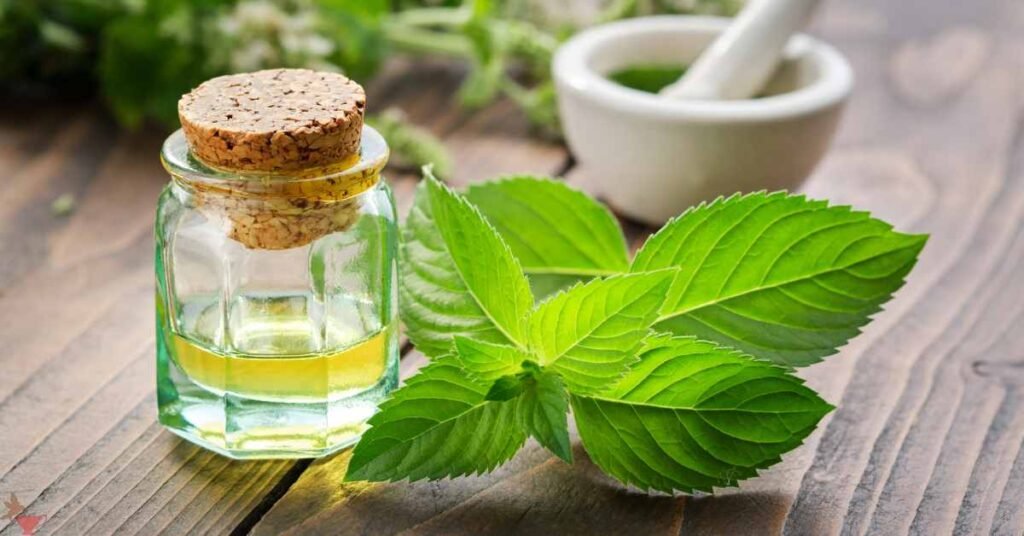Mint teas, particularly spearmint and peppermint, are beloved worldwide for their refreshing flavors and numerous health benefits.
Despite their similarities, these two varieties offer distinct tastes, aromas, and medicinal properties.
This article delves into the differences between spearmint and peppermint tea, exploring their origins, characteristics, health benefits, and best uses.
Origins and Characteristics

Spearmint (Mentha spicata):
- Origin: Spearmint is native to Europe and Asia but is now widely cultivated worldwide.
- Appearance: Spearmint plants have bright green leaves with a serrated edge and a pointed tip, resembling a spear, hence the name.
- Flavor and Aroma: Spearmint has a sweet, mild, and slightly fruity flavor with a fresh, minty aroma. It contains a lower menthol content (around 0.5%) compared to peppermint, giving it a softer taste.
Peppermint (Mentha x piperita):
- Origin: Peppermint is a hybrid of watermint and spearmint, originally discovered in England. It is now widely grown in Europe, North America, and other temperate regions.
- Appearance: Peppermint plants have dark green leaves with purple stems. The leaves are broader and have a slightly wrinkled appearance.
- Flavor and Aroma: Peppermint has a strong, sharp, and cooling flavor due to its higher menthol content (up to 40%). Its aroma is intensely minty and invigorating.
Health Benefits
Both spearmint and peppermint teas offer a range of health benefits, but their specific properties differ due to their distinct chemical compositions.
Spearmint Tea:

- Digestive Health: Spearmint tea is known for its soothing effect on the digestive system. It can help relieve nausea, bloating, and indigestion.
- Hormonal Balance: Studies suggest that spearmint tea can help balance hormones in women, potentially reducing symptoms of hirsutism (excessive hair growth) and polycystic ovary syndrome (PCOS).
- Anti-inflammatory Properties: Spearmint contains antioxidants and anti-inflammatory compounds that can help reduce inflammation and oxidative stress in the body.
- Cognitive Function: Some research indicates that spearmint extract may improve memory and cognitive function in older adults.
Peppermint Tea:
- Digestive Health: Peppermint tea is highly effective in relieving digestive issues such as irritable bowel syndrome (IBS), gas, and cramps due to its muscle relaxant properties.
- Respiratory Health: The menthol in peppermint tea acts as a decongestant, making it beneficial for relieving symptoms of colds, sinusitis, and allergies.
- Pain Relief: Peppermint tea can help alleviate headaches, migraines, and menstrual cramps due to its analgesic and muscle-relaxing effects.
- Stress and Anxiety: The aroma of peppermint tea has a calming effect, helping to reduce stress and anxiety levels.
Culinary and Medicinal Uses
Spearmint Tea:
- Culinary Uses: Spearmint tea is often used in cooking and beverages for its mild, sweet flavor. It pairs well with fruits, salads, and desserts. It is a key ingredient in traditional Moroccan mint tea.
- Medicinal Uses: Spearmint tea is used in herbal medicine to treat digestive issues, hormonal imbalances, and inflammation. It is also used in aromatherapy for its calming effects.
Peppermint Tea:

- Culinary Uses: Peppermint tea is popular in both hot and iced tea forms. It is used in desserts, chocolates, and beverages for its strong, cooling flavor. It is also used to flavor toothpaste and chewing gum.
- Medicinal Uses: Peppermint tea is widely used to treat digestive disorders, respiratory issues, and pain. It is also used in aromatherapy to relieve stress and improve mental clarity.
Preparation and Serving Suggestions
Spearmint Tea:
- Preparation: Cover dried spearmint leaves with hot water for 5-10 minutes. For a stronger flavor, steep longer or use more leaves.
- Serving Suggestions: Spearmint tea can be enjoyed hot or iced. Add lemon, honey, or both for extra flavor. It pairs well with light snacks like cookies or fruit.
Peppermint Tea:
- Preparation: Cover fresh or dried peppermint leaves with hot water for 5-10 minutes. Adjust the steeping time to achieve the desired strength.
- Serving Suggestions: Peppermint tea can be enjoyed hot or iced. Sweeten with honey or add a splash of lemon juice. It pairs well with rich desserts like chocolate cake or pastries.
Final Word
While both spearmint and peppermint teas belong to the mint family and share some health benefits, they offer unique flavors and medicinal properties.
Spearmint tea is milder and sweeter, making it ideal for those who prefer a less intense mint flavor.
It is particularly beneficial for hormonal balance and cognitive function.

On the other hand, peppermint tea has a strong, cooling flavor and is highly effective in treating digestive and respiratory issues, as well as providing pain relief.
Choosing between spearmint and peppermint tea ultimately depends on your personal preference and specific health needs.
Both teas are versatile, delicious, and offer a range of health benefits, making them excellent additions to your daily wellness routine. Whether you enjoy them hot or iced, these minty teas are sure to refresh and rejuvenate you.
MEDICAL DISCLAIMER
Itsnevernotteatime.com cannot and does not contain medical/health advice. The medical/health information is provided for general and educational purposes only and is not a substitute for professional advice.




